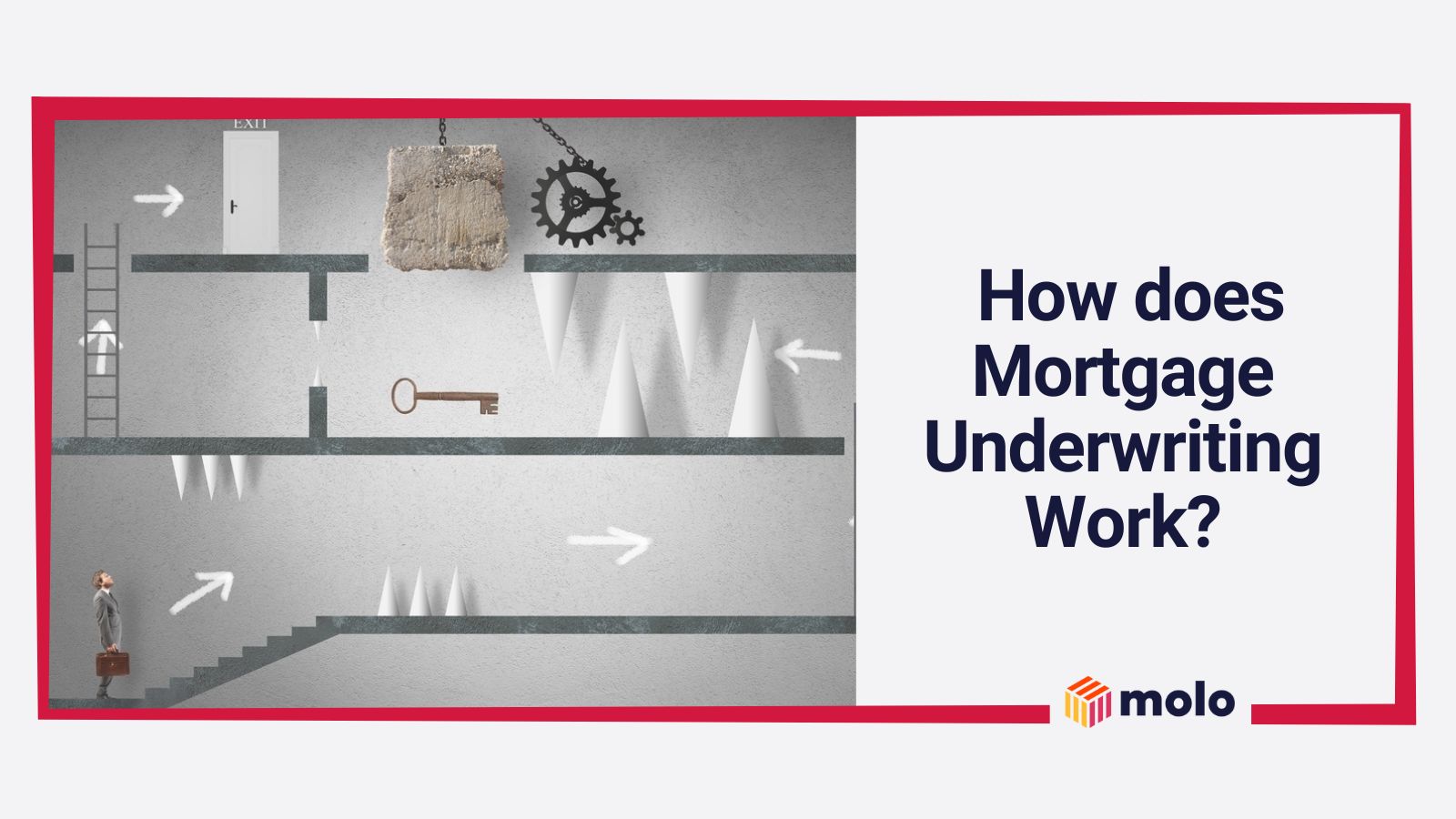So you’ve begun your mortgage application and provided all the necessary information. What comes next? That would be the underwriting process, which for all intents and purposes is one of the final stages of the process before your mortgage offer is issued. Here, we bring you everything you need to know about mortgage underwriting, including how it works and why it’s so important.
What is mortgage underwriting?
The underwriting process involves a thorough examination of various factors including your credit history, the property you’re interested in buying or remortgaging, your ability to afford the mortgage payments via personal income or the property rental income, and your overall eligibility based on the lender’s criteria as well as broader fraud prevention checks.
Once the lender has reviewed all the relevant information for your application, they will know if it can be supported. Mortgage underwriting is a necessary step in the application process, allowing the lender to evaluate your financial stability and whether you can, in their eyes, comfortably afford the mortgage.
Who performs mortgage underwriting?
Mortgage underwriters support the lender and are responsible for evaluating the risk involved with granting loans. Given the high stakes of a buy-to-let mortgage, which can easily be six-figures, underwriters, supported by automated background checks, enforce rigorous criteria and assessments that may take time to complete.
Once they are convinced that the risk is acceptable, they will likely approve your mortgage application. At this stage, you can generally expect to receive a formal mortgage offer. It’s worth noting, however, that if your financial situation changes between the time of the offer and completion, the lender retains the right to withdraw the offer.

75 LTV mortgages
- Borrow up to 75% of the property’s value
- Get a mortgage as an individual or limited company
- An online mortgage application that takes place entirely online.
How long does mortgage underwriting take?
The duration of the mortgage underwriting process can vary significantly. This timeline is influenced by multiple factors, including the need for additional information from you.
Essentially, the complexity or risk related to your application means underwriting decision times can vary from anywhere between one day and several weeks.
The method of underwriting – manual or automated – also plays a role. Automated underwriting is generally quicker but may not be suitable for applicants with unique financial situations, like irregular income.
Manual underwriting allows for more nuanced decision-making and is often used for such cases. Some lenders employ a mix of both automated and manual methods to assess risk more accurately.
Here at Molo, underwriting is both automated and manual. Many checks are automated upon submission of the application to minimise the amount of time required for processing. But a manual aspect still exists and is performed by the underwriters to ensure security.
What is the mortgage underwriting process?
Let’s take a look at how the mortgage underwriting process works and what you can expect when applying for a buy-to-let mortgage.
At Molo, we look at your credit score to ensure a minimum threshold is met.
After you’ve selected a property, the underwriter will evaluate its value, condition and potential for resale in case you default on payments. This ensures the lender can recover their investment if needed. For buy-to-let, lenders this also includes an independent assessment of the rental.
The lender needs to ensure they fully understand the origins of your funds. For instance, if your deposit is a gift, they might request additional information. Clarification on specific transactions may also be sought to confirm the legitimacy of your finances.
Assuming all previous steps have been successful, the underwriter conducts a thorough examination of both the loan and your financial standing. You may be asked to provide additional information, documents or evidence to support your application. Required documentation typically includes:
- Bank statements
- Validation of mortgage payment history
- Income verification
- Deposit confirmation
- Financial history
- Property specifics
Reviewing your complete financial profile allows the underwriter to gauge your financial stability, money management skills and any areas that may need to be investigated further.
What happens if my mortgage application is denied by the underwriter?
There are multiple factors that could lead to your buy-to-let mortgage application being rejected during the underwriting stage. Common reasons include:
You may not have sufficient income or rental to qualify for the loan amount requested, or your income source might not be acceptable to the lender.
Your deposit might be too small or come from an unacceptable deposit source (e.g., borrowing off your credit card).
Your overall credit profile or a specific event in your credit history (like a past mortgage default) could disqualify you.
Underwriters will review all information available to them including your bank statements to ensure there are no undisclosed outgoings that weren’t taken into account.
If you suspect that your application could be declined – perhaps due to high levels of debts compared to your income, a small deposit or a poor credit history – don’t be disheartened. We may offer a reduced loan amount if this scenario occurs when applying with Molo, meaning you could still be able to get a buy-to-let mortgage.

75 LTV mortgages
- Borrow up to 75% of the property’s value
- Get a mortgage as an individual or limited company
- An online mortgage application that takes place entirely online.
Is there any difference between buy-to-let mortgage underwriting and residential?
When it comes to differences between buy-to-let and residential mortgage underwriting, the underwriter typically focuses more on the potential rental income of the property. They usually require the property’s rental potential to be 125-145% of the mortgage interest rate.
What happens after underwriting?
Once your application is approved, you can continue with the property-buying process. Your solicitor will work with the seller’s solicitor to finalise the contracts and set a completion date. It’s worth looking into additional extras like landlord’s insurance at this stage, as lenders usually require you to have this in place.
Final thoughts: underwriting
Mortgage underwriting is a vital part of the process and you’ll need it to be successful in order to get a buy-to-let mortgage. Generally speaking, it takes anywhere between a few days and a few weeks, and if you get the green light, then you’re in the final stages of buying a rental property.

75 LTV mortgages
- Borrow up to 75% of the property’s value
- Get a mortgage as an individual or limited company
- An online mortgage application that takes place entirely online.


